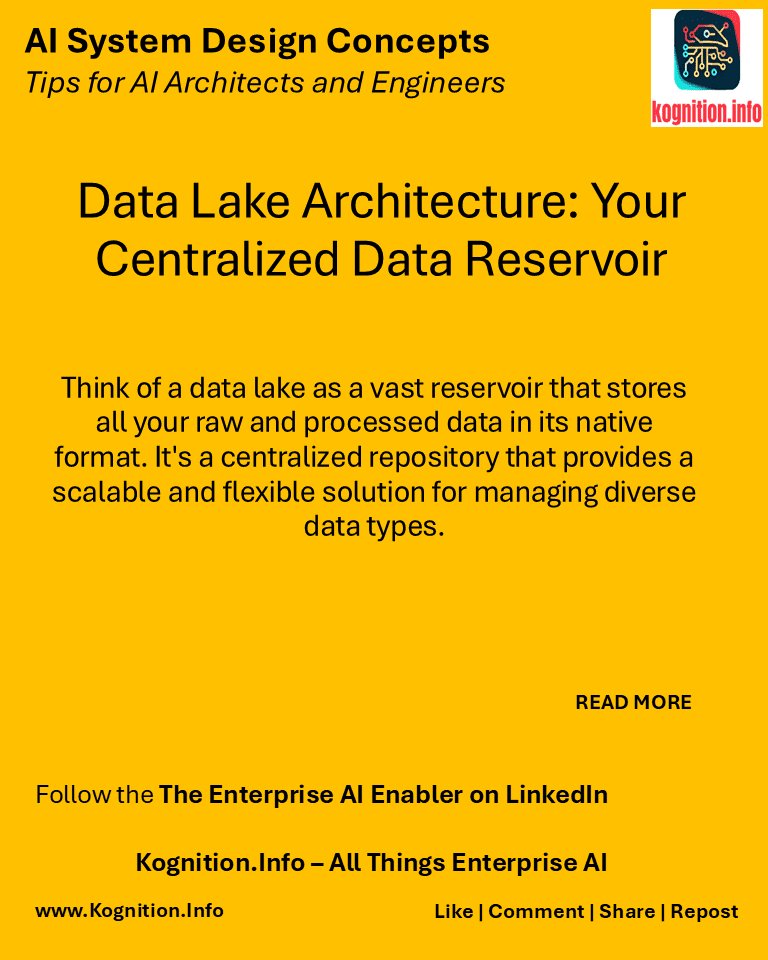
Think of a data lake as a vast reservoir that stores all your raw and processed data in its native format. It’s a centralized repository that provides a scalable and flexible solution for managing diverse data types.
Use cases:
- Data science and machine learning: Provides a rich source of data for exploration, analysis, and model training.
- Data warehousing and business intelligence: Offers a platform for integrating data from various sources and creating analytical dashboards.
- Archiving and backup: Stores historical data for compliance and auditing purposes.
How?
- Choose a storage platform: Select a scalable and cost-effective storage solution like Hadoop Distributed File System (HDFS) or cloud-based object storage (AWS S3, Azure Blob Storage).
- Organize data with metadata: Use metadata tagging to categorize and describe data for easy discovery and access.
- Implement data governance: Establish policies for data access, security, and quality.
- Build data processing pipelines: Utilize tools like Apache Spark for processing and analyzing data within the lake.
Benefits:
- Scalability: Handles massive data volumes and diverse data types.
- Flexibility: Stores data in its raw format, allowing for various types of analysis.
- Cost-effectiveness: Offers a potentially more cost-effective solution compared to traditional data warehouses.
Potential pitfalls:
- Data swamp: Without proper organization and governance, a data lake can become a “data swamp” – a chaotic collection of data.
- Security risks: Protect sensitive data with appropriate access controls and encryption.
- Data discovery challenges: Implement effective metadata management and search capabilities to facilitate data discovery.
